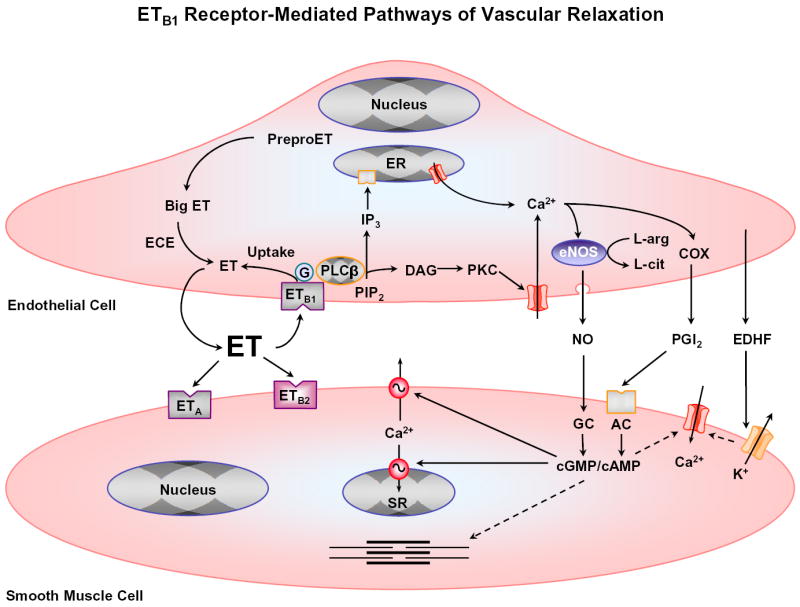Fig. 2.

ET-induced VSM relaxation pathways. ET binds to ETB1 receptor in endothelial cells or ETA and ETB2 receptors in VSM. ETB1 may function in ET uptake. ETB1 is also coupled to activation of PLCβ, hydrolysis of PIP2, and release of IP3 and diacylglycerol (DAG). IP3 stimulates Ca2+ release from the endoplasmic reticulum (ER). Ca2+ stimulates eNOS, which converts L-arginine to L-citrulline and increases NO production. NO diffuses into VSM, stimulates guanylate cyclase (GC) and increases cGMP. cGMP causes VSM relaxation by decreasing [Ca2+]i and the myofilament sensitivity to Ca2+. ETB1 -mediated increase in endothelial Ca2+ also stimulates cyclooxygenases (COX) and prostacyclin (PGI2) production. PGI2 activates adenylate cyclase (AC) and increases cAMP, which causes VSM relaxation similar to cGMP. ETB1 also increases the release of EDHF, which activates K+ channels and causes hyperpolarization, inhibition of Ca2+ influx, and VSM relaxation. Interrupted arrows indicate inhibition.
